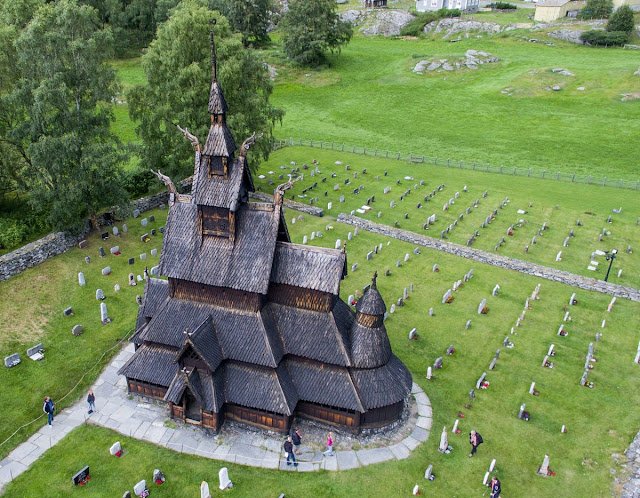
Norway became a Christian nation during the 10th and 11th centuries, following the Viking Age. As soon as the new religion took hold, a period of church building began, lasting several centuries.
Those who built these churches were the same people who constructed the Viking longboats, with many of the building techniques being similar. Norway has a long history of wooden construction, perhaps due to its extensive forests and rugged terrain. It was one of the few countries that chose not to build its early churches from stone but instead used wood for its places of worship.
Despite their simple appearance, the techniques used in church construction are complex and considered an engineering marvel. Stave churches were supported by ‘staves’ or large posts. They were built on a foundation of flat stones, used to raise the ground beams off the earth and away from moisture. The walls were made of vertical planks, topped with four additional beams to support the roof.
Instead of nails, wooden pegs were used. This might be one of the reasons why some stave churches have survived for more than eight hundred years. The wooden pegs allow the building to expand and contract with changes in temperature and humidity, rather than being rigidly fixed in place using iron nails and hardware.



















